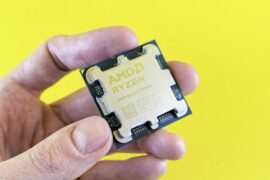This article may contain references to products or services from one or more of our advertisers or partners. We may receive compensation when you click on links to those products or services. Nonetheless, our opinions are our own.
- Key Highlights
- Introduction
-
Understanding General Investment Accounts
- The Basics of General Investment Accounts
- General investment accounts are different from other types of investment accounts. They do not have specific tax advantages. You can buy and sell various assets like stocks and bonds. These accounts offer more flexibility since there are no restrictions on what you can trade. However, they may not provide the same tax benefits as retirement accounts. It is important to understand these differences when choosing where to invest your money.
- Preparing to Invest: What You Need Before Starting
- A Simple Guide for Beginners to Invest with General Investment Accounts
- Strategies for Growing Your Wealth
- Tax Implications and Considerations
- Conclusion
- Frequently Asked Questions
- Recommended Reads
Key Highlights
- A General Investment Account (GIA) is a type of investment account that you need to pay taxes on. It helps you grow your money.
- GIAs do not have a yearly limit on how much you can invest. This makes them good for people who have used up their ISA limit.
- In a GIA, you can invest in many things like funds, stocks, and bonds.
- GIAs are flexible, but they do not offer the same tax benefits as ISAs.
- It is important to know the tax rules before you invest. This will help you get the most money back.
Introduction
A General Investment Account (GIA) is an investment choice that helps people grow their money. It can also help you reach your money goals. This guide will explain what GIAs are, how they function, and the tax details you need to know. By learning these important parts, you can make smart investment choices and build a strong money plan.
Understanding General Investment Accounts
A General Investment Account is an easy and flexible way to invest in different assets like stocks, bonds, and funds. There is no yearly limit for how much you can put in. This makes GIAs a good choice for anyone who has used their ISA limit and wants to invest more. But keep in mind that GIAs do not provide the same tax benefits as ISAs.
The Basics of General Investment Accounts
A GIA lets you invest in many types of things. This makes it good for both new and skilled investors. One of its main benefits is that you can invest as much money as you want each year. ISAs have limits on what you can put in each year, but a GIA does not.
GIAs are flexible, but they also have risks. The value of your things can go up and down. To handle these risks, you need to spread out your investments and know how much risk you can take before you invest.
General investment accounts are different from other types of investment accounts. They do not have specific tax advantages. You can buy and sell various assets like stocks and bonds. These accounts offer more flexibility since there are no restrictions on what you can trade. However, they may not provide the same tax benefits as retirement accounts. It is important to understand these differences when choosing where to invest your money.
One main difference between GIAs and other investment accounts, like ISAs, is tax. ISAs allow your money to grow without taxes, but GIAs do not. This means any money you make from investments in a GIA might be taxed with Capital Gains Tax (CGT).
Also, any money you get from GIA investments as dividends might be taxed. The tax effects depend on how much money you make. It is a good idea to talk to an advisor to understand what investing in a GIA can mean for you.
Preparing to Invest: What You Need Before Starting
Before you invest in a GIA, it is important to check your money situation and set clear goals. Doing these steps will help make sure your investment plan matches your long-term goals.
Assessing Your Financial Health
Before you begin investing, closely check your money situation. Look at your income, spending, and current belongings. This will help you see how much you can invest without affecting your important money needs.
Think about things like your emergency savings, any debts you have, and your current expenses. It is a good idea to build a strong money base before making big investments. This will help you avoid big money risks.
Setting Your Investment Goals
Defining clear investment goals is an important step in making a good investment plan. You need to know what you want to do with your investments. This could be saving for retirement, buying a home, or paying for your child’s education.
Setting SMART goals for your investments is a good way to stay focused. SMART stands for Specific, Measurable, Achievable, Relevant, and Time-bound. Instead of just saying “save for retirement,” pick a target amount and a time limit. This will help you see how you are doing.
A Simple Guide for Beginners to Invest with General Investment Accounts
Starting your investment journey with a GIA is easy. Here is a simple step-by-step guide to help you open an account and pick the right investments for your goals.
Step 1: Opening Your Account
The first step in opening a GIA is to choose a trustworthy investment provider. Many places offer GIAs, like banks, investment websites, and robo-advisors.
When picking a provider, think about things like:
- Costs and fees
- Ways to invest
- Easy-to-use platform and access
- Help and resources for customers
Once you pick a provider, you can usually start a GIA online by giving some information about yourself and your money.
Step 2: Choosing Your Investments
After you set up your GIA, the next step is to choose your investments. The options you have depend on your provider. Some common choices for investments include:
- Funds—These help you spread your money across different things like stocks and bonds.
- Shares—Buying parts of a company can help you grow your money, but it is riskier.
- Bonds—Bonds are a safer choice than stocks. They give you regular fixed payments.
Before you make investment choices, think about how much risk you can handle. Spread out your investments to deal with changes in the market.
Strategies for Growing Your Wealth
Maximizing your GIA’s ability needs smart investment plans. Two main ways to get lasting growth are to diversify and manage risk.
Diversifying Your Portfolio
Diversification is a key strategy to cut down risk and boost investment stability. By spreading your investments across different types of assets, industries, and places, you can reduce losses from investments that do not perform well.
For example, don’t just invest in UK stocks. Think about adding global funds or ETFs to see international markets. A good mix of investments can bring better returns over time.
Understanding and Managing Risk
All investments have some risk. It is important to know your risk level and match your investments to it. This is key for lasting success.
If you like low-risk investments, think about bonds or mixed funds. If you feel okay with higher risks, growth stocks and funds from new markets might give you better returns.
Keep in mind that how things did in the past doesn’t mean it will happen the same way in the future. Stay updated on market trends and get ready for changes in the value of your investments.
Tax Implications and Considerations
GIAs give you some flexibility with your investments, but they do not provide tax-free benefits. Knowing the tax effects of GIAs can help you manage your investments better.
Profits from selling assets in a GIA might have to pay Capital Gains Tax (CGT) if they go over the yearly limit. For the 2024/2025 tax year, the CGT limit is £3,000. This means any profits over this amount will be taxed.
CGT rates vary based on income tax bands:
| Tax Band | CGT Rate |
|---|---|
| Basic Rate | 18% |
| Higher & Additional Rate | 24% |
Knowing your CGT allowance is important. It can help you plan your investments better. This way, you can lower your tax costs.
The Impact of Taxes on Dividends
If you get dividends from your GIA investments, these may be taxed too. For 2024/2025, the dividend allowance is £500. This means that any dividends over this amount will be taxed according to your income tax bracket.
To improve your tax situation, think about talking to a tax advisor. He can help you make smart choices for your investments.
Conclusion
To grow your money well with a General Investment Account, you need a good plan and smart choices. By making clear goals, spreading out your investments, and keeping risks in check, you can create a solid base for long-term growth.
Staying informed about taxes is just as important. It helps you make the most of your returns. Regularly checking and changing your investment plan will keep you on track. This way, you can reach your money goals.
If you are set to begin your investment journey, spend some time looking into your options. Pick a provider that matches your money goals.
Frequently Asked Questions
What is the least amount of money needed to start a general investment account?
The least amount you need to invest depends on the provider. Some sites let you begin with a little deposit. Others might ask for a bigger first investment. It’s best to look at the rules of the provider you pick.
Can I move my things into a general investment account?
Yes, many providers let you do in-specie transfers. This means you can move things from your other accounts, like an ISA or a different account, into a GIA without having to sell them first.
How do I manage my General Investment Account?
You can handle your GIA using your provider’s online site or mobile app. Most sites have tools to watch your investments, make transactions, and check your portfolio’s performance.
Are general investment accounts a good choice for beginners?
Yes, GIAs can be a good choice for beginners. However, it is important to understand the basics of investing before you start. Talking to a money expert can help you create a strong investment plan.
How often should I review my investment portfolio?
It is a good idea to check your investments at least once a year. You should also do this if there are big changes in your money goals or the market. Having regular checks makes sure your investments match what you want.

Reviewed and edited by Albert Fang.
See a typo or want to suggest an edit/revision to the content? Use the contact us form to provide feedback.
At FangWallet, we value editorial integrity and open collaboration in curating quality content for readers to enjoy. Much appreciated for the assist.
Did you like our article and find it insightful? We encourage sharing the article link with family and friends to benefit as well - better yet, sharing on social media. Thank you for the support! 🍉
Article Title: General Investment Account: Best Strategies for Growing Your Wealth
https://fangwallet.com/2025/02/17/general-investment-account/The FangWallet Promise
FangWallet is an editorially independent resource - founded on breaking down challenging financial concepts for anyone to understand since 2014. While we adhere to editorial integrity, note that this post may contain references to products from our partners.
The FangWallet promise is always to have your best interest in mind and be transparent and honest about the financial picture.
Become an Insider

Subscribe to get a free daily budget planner printable to help get your money on track!
Make passive money the right way. No spam.
Editorial Disclaimer: The editorial content on this page is not provided by any of the companies mentioned. The opinions expressed here are the author's alone.
The content of this website is for informational purposes only and does not represent investment advice, or an offer or solicitation to buy or sell any security, investment, or product. Investors are encouraged to do their own due diligence, and, if necessary, consult professional advising before making any investment decisions. Investing involves a high degree of risk, and financial losses may occur including the potential loss of principal.
Source Citation References:
+ Inspo











































